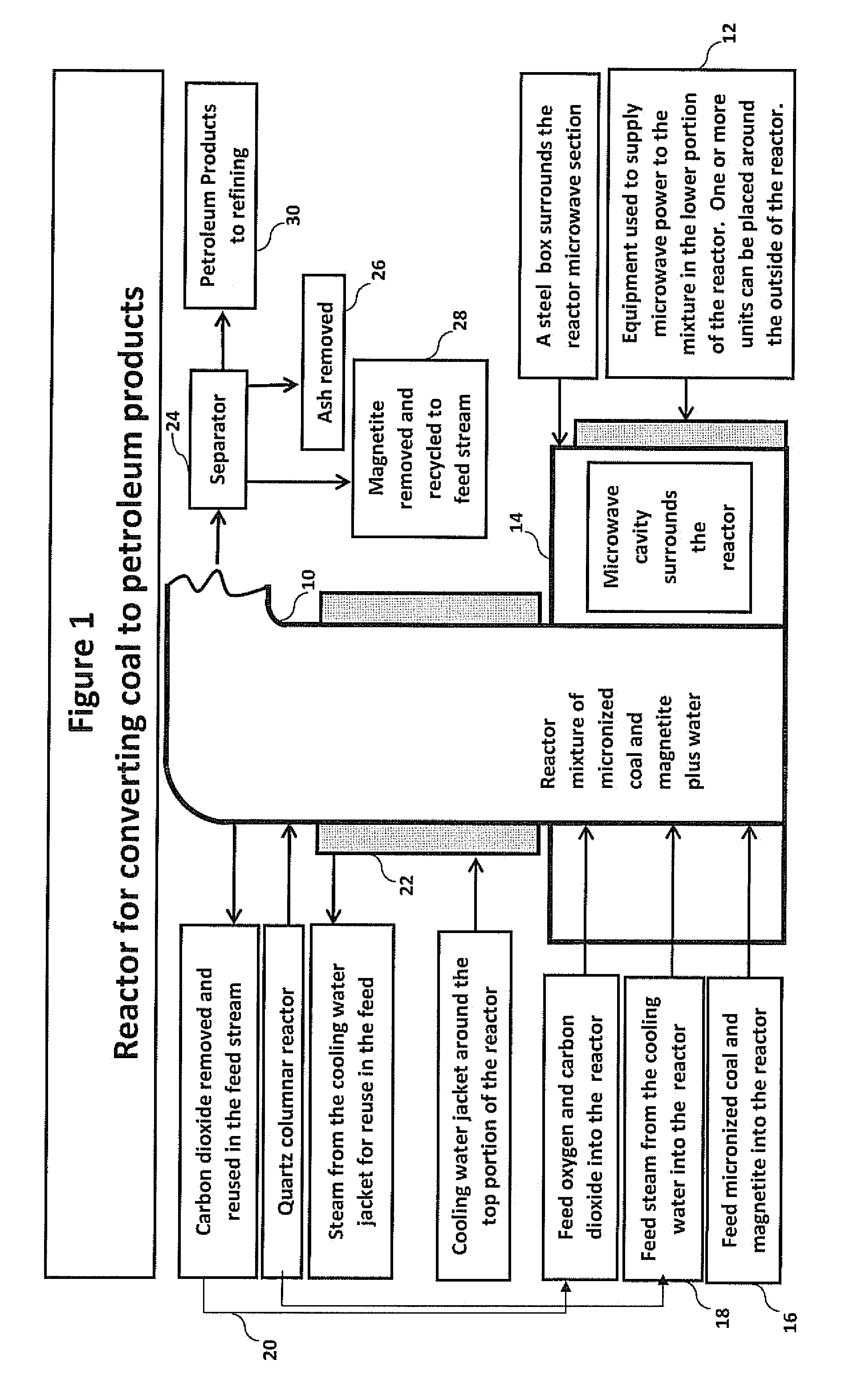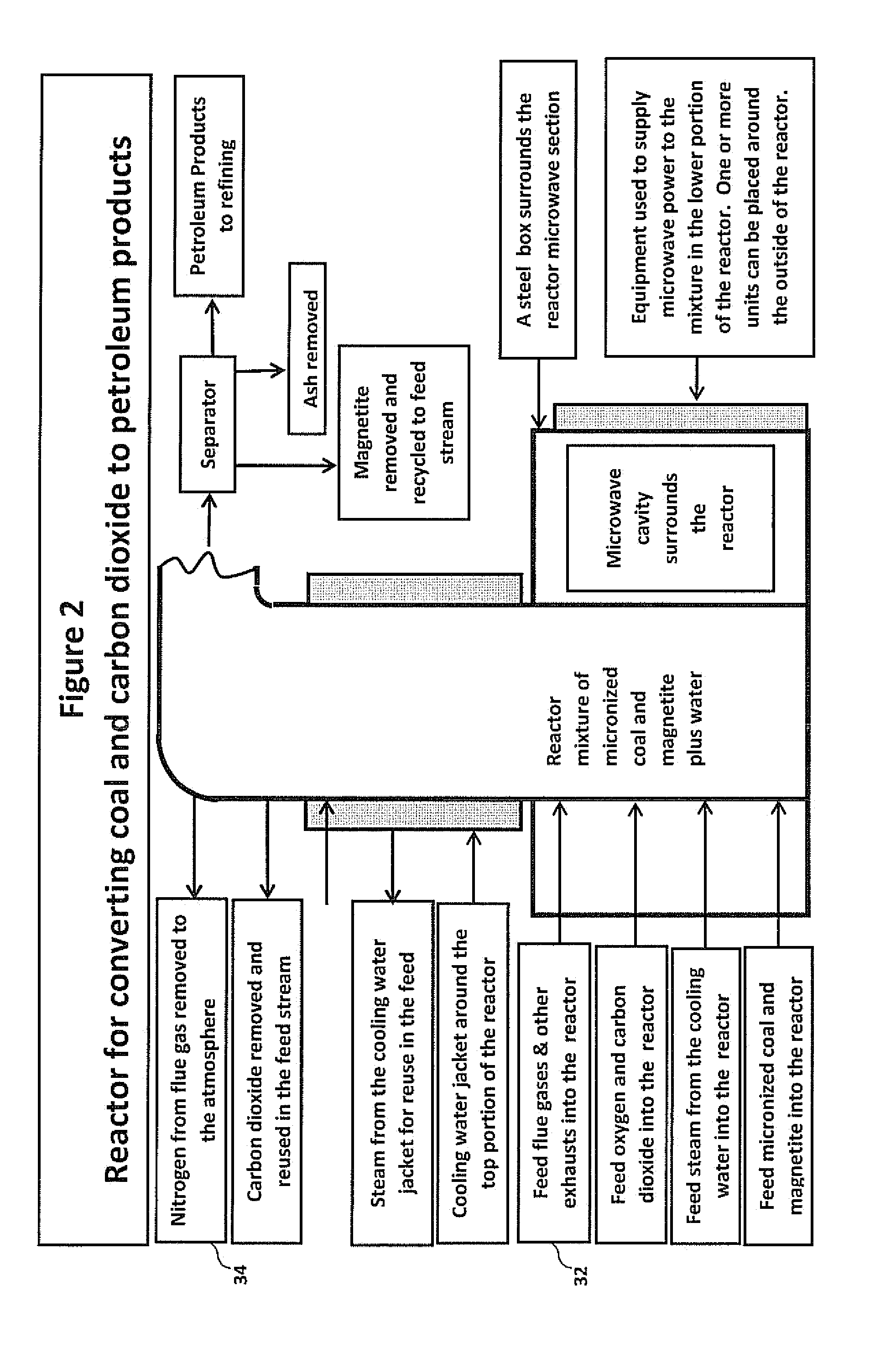Method and apparatus for producing liquid hydrocarbon fuels from coal
a hydrocarbon fuel and coal technology, applied in the direction of combustible gas production, energy-based chemical/physical/physical-chemical processes, chemical/physical/physical-chemical processes, etc., can solve the problems of complex and expensive facilities and processes for converting coal into petroleum products, and achieve the effect of reducing capital and operating costs
- Summary
- Abstract
- Description
- Claims
- Application Information
AI Technical Summary
Benefits of technology
Problems solved by technology
Method used
Image
Examples
Embodiment Construction
[0028]Referring to the schematic diagram of FIG. 1, the reactor proper comprises a vertically oriented furnace. The reactor 10 may have an internal lining of quartz or other suitable material that is transparent to microwave power and can withstand temperatures in the range of 1800° C. and pressures in the range of 500 psig. The reactor 10 may be reinforced with carbon fibers or any suitable microwave transparent material. The upper portion of the reactor 10 could have an outer casing of a material which is not transparent to microwaves. One or more microwave generators 12 will be supported in a cavity 14 which surrounds the base of the reactor 10.
[0029]The base of the reactor 10 is fed with micronized coal and micronized magnetite at 16. The coal is preferably micronized into the range of 10 microns, preferably by the process disclosed in my copending patent application Ser. No. 12 / 837,091, the entire disclosure of which is incorporated herein by reference. The magnetite may be mic...
PUM
| Property | Measurement | Unit |
|---|---|---|
| particle size | aaaaa | aaaaa |
| particle size | aaaaa | aaaaa |
| particle size | aaaaa | aaaaa |
Abstract
Description
Claims
Application Information
 Login to View More
Login to View More - R&D
- Intellectual Property
- Life Sciences
- Materials
- Tech Scout
- Unparalleled Data Quality
- Higher Quality Content
- 60% Fewer Hallucinations
Browse by: Latest US Patents, China's latest patents, Technical Efficacy Thesaurus, Application Domain, Technology Topic, Popular Technical Reports.
© 2025 PatSnap. All rights reserved.Legal|Privacy policy|Modern Slavery Act Transparency Statement|Sitemap|About US| Contact US: help@patsnap.com



